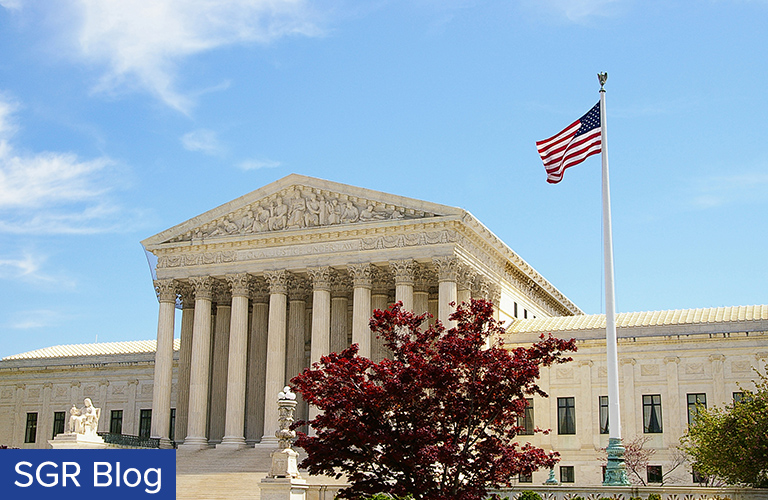
HP, Inc. has filed with the Supreme Court its long-awaited petition in the highly publicized HP v. Berkheimer patent case, seeking certiorari review on the issue of whether patent eligibility analysis under Alice/Mayo is an issue of law to be decided by the Court, or an issue of fact, as was held by the Federal Circuit in the case below. If the Federal Circuit’s opinion stands, then the question of patent eligibility will likely become more difficult (than under previous case law) to adjudicate on a motion to dismiss or even on a motion for summary judgment.
In the underlying district court proceeding, Berkheimer sued HP on a patent relating to digitally processing and archiving computer files. HP has argued that the claims in dispute concern nothing more than “software implementing [an] abstract idea on a computer;” “do not recite unconventional computer hardware, specific programming, or tailored software;” and do not even provide “any meaningful guidance as to how to write software implementing the claims.”
The district court granted HP’s motion for summary judgment, ruling that the claims at issue were ineligible under 35 U.S.C. § 101. The district court applied the two-step patent eligibility test under the Supreme Court’s Alice opinion. Under step one, the district court found the claims were directed to abstract ideas of data manipulation and storage. At step two under Alice, the district court found the claims did not offer a “specific, concrete contribution to the technology of digital archiving.” The district court found that the claims did not add any inventive concept to the abstract idea on a generic computer and were therefore ineligible for patent protection as a matter of law.
On appeal, the Federal Circuit panel affirmed in part and remanded in part. Regarding the first step of Alice, the panel agreed that each of the claims was directed to an abstract idea. Regarding the second step of Alice, the panel held that the question of whether a claim element or combination of elements is well-understood, routine and conventional is a question of fact that must be proven by clear and convincing evidence. Here, the panel found that there was a genuine issue of fact as to whether the claims recited well-understood, routine, and conventional activities. Thus, the panel remanded for further proceedings regarding this factual question.
Prior to this ruling, neither the Supreme Court nor any prior Federal Circuit panel had so unambiguously addressed the extent to which disputed facts affect the outcome of eligibility disputes. The Federal Circuit’s opinion, therefore, offered a potentially major shift in the analysis under Alice and will significantly affect a patent owner’s strategy in resisting eligibility challenges.
Notwithstanding the seeming importance of the case, the Federal Circuit declined to hear the case en banc, prompting three Federal Circuit judges to write opinions calling upon the Supreme Court to hear the case. Judge Lourie, joined by Judge Newman, concurred in the denial of the rehearing en banc, but noted the need for further exposition by a “higher authority []: Section 101 issues certainly require attention beyond the power of [the Federal Circuit].” Judge Reyna dissented from the denial of rehearing en banc because the questions at issue were of “exceptional importance,” and because the Federal Circuit panel’s opinion “alter[s] the § 101 analysis in a significant and fundamental manner, [] offer[ing] no meaningful guidance to the bar, the government, or the public on how to proceed on these new grounds.” In a subsequent unrelated case, a fourth Federal Circuit judge, Judge Plager, has written that the law of patent eligibility under § 101 is “incoherent” creating a “real problem” and a “conundrum” in great need of review by the Supreme Court. Interval Licensing LLC v. AOL, Inc., 896 F.3d 1335, 1348, 1351, 1356 (Fed. Cir. 2018) (Plager, J., concurring in part and dissenting in part).
In seeking reversal of the Federal Circuit opinion, HP’s petition for certiorari raises several arguments.
HP argues that the decision conflicts with the Alice opinion itself, quoting language from the opinion that “we [i.e., the court] determine whether the claims are directed to a patent-ineligible concept” and arguing further that the Federal Circuit transformed patent eligibility into “a question of fact based on the state of the art.” (Emphasis in HP’s brief.)
HP complains that the decision allows eligibility to be determined improperly based upon the level of novelty in an abstract idea, and further argues that “patent eligibility does not change over time with the state of the art, which would be the outcome if the Federal Circuit’s approach stands as the law.”
HP points to numerous commentators who are now advising patent prosecutors to “remove” or “at least rethink” the inclusion of statements in the patent application that suggest one or more features or elements comprising the invention are “well-understood, routine, and/or conventional in the art.” HP argues that a proper test should not “depend on artful drafting.”
HP also argues that under the Federal Circuit’s new approach, even the Supreme Court’s own prior eligibility opinions in Alice and Mayo would be wrongly decided because sufficient assertions of “improvements” in the patent specifications in those cases would be sufficient to create an issue of fact and therefore would prevent resolution of patent eligibility on motion practice.
Given the significant importance of the issues raised, patent practitioners and commentators alike will be following this case with keen interest.

